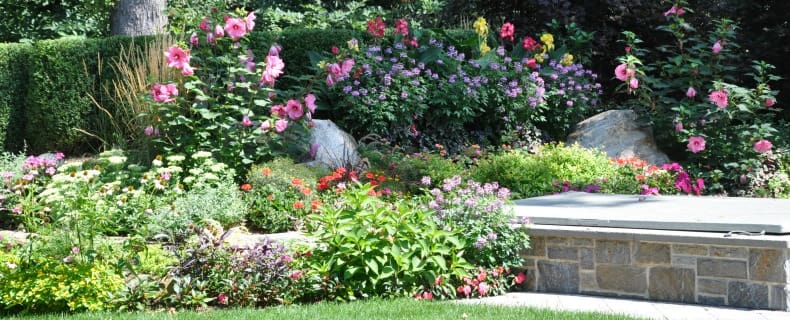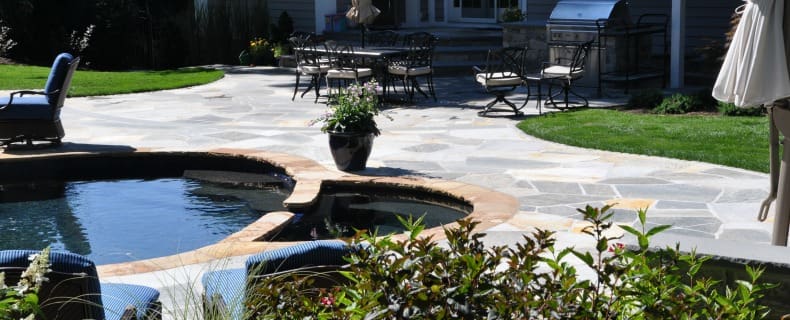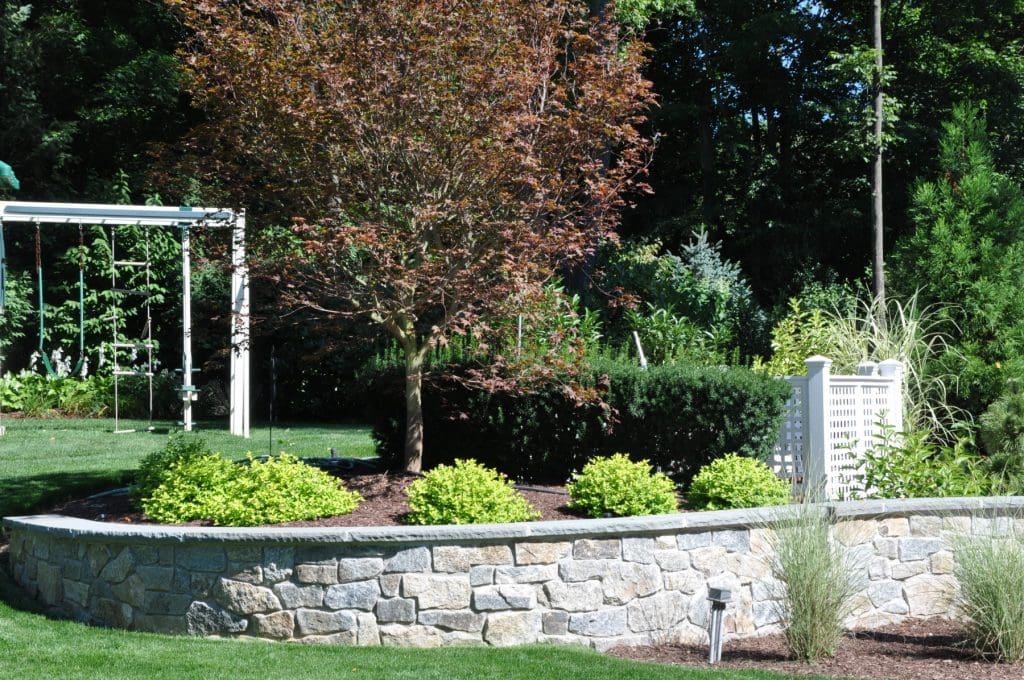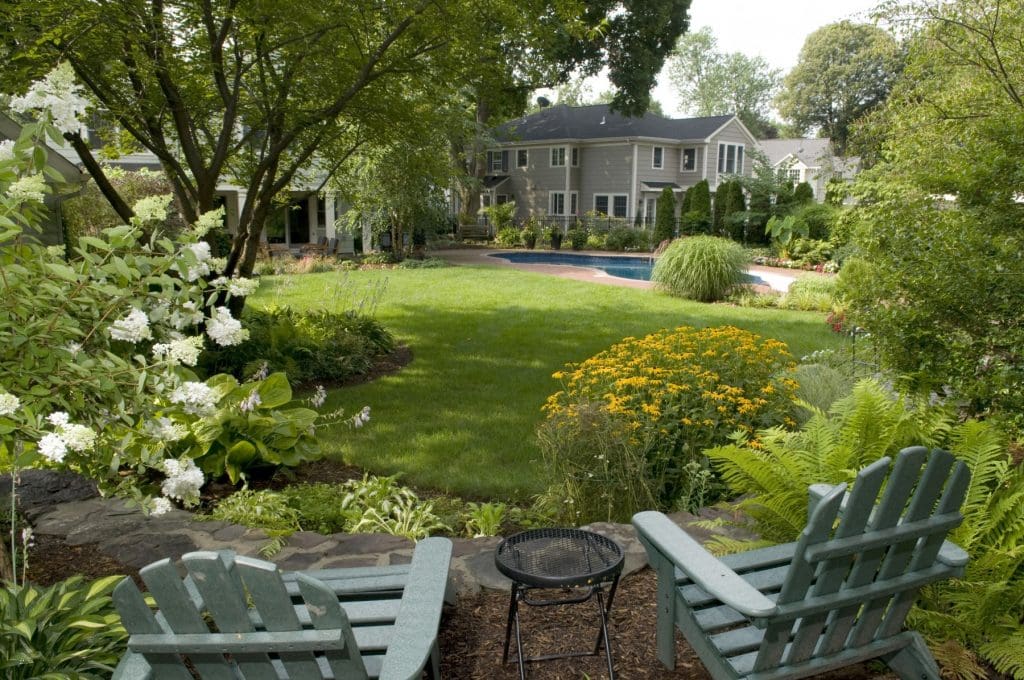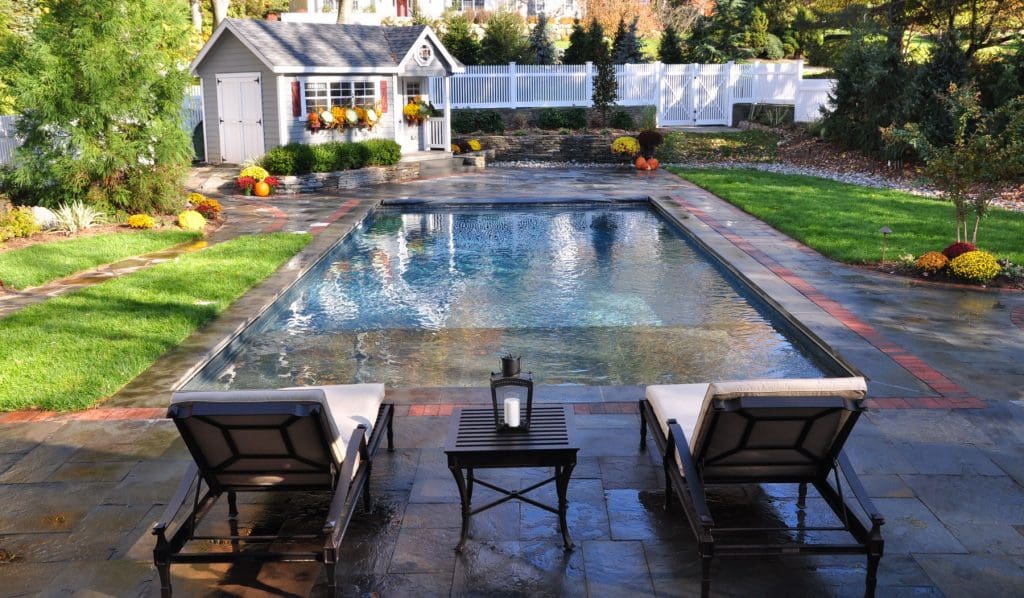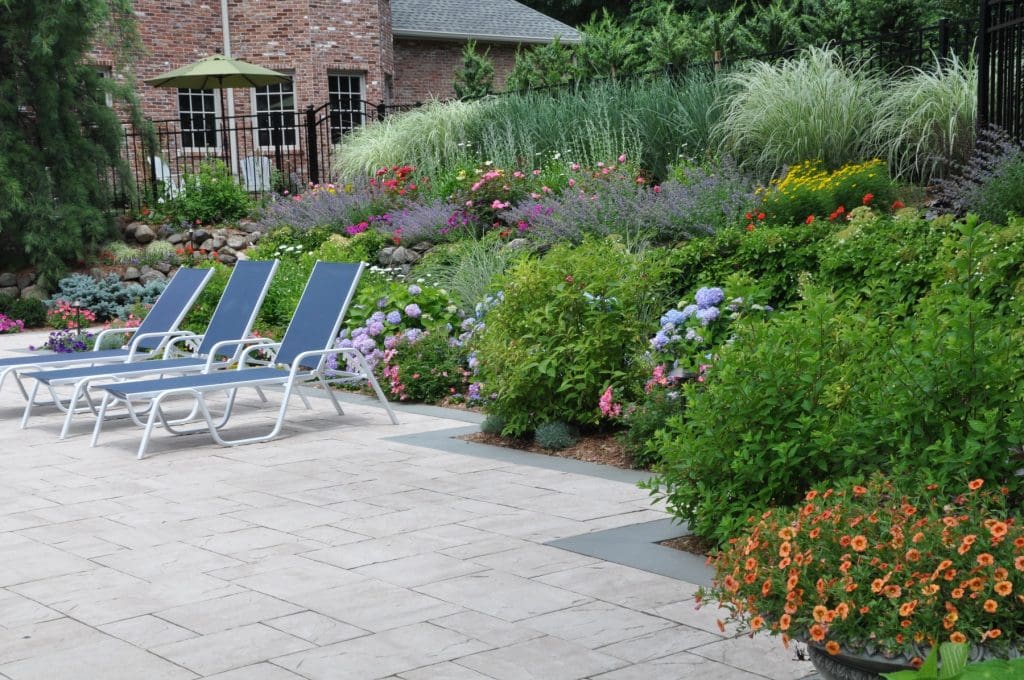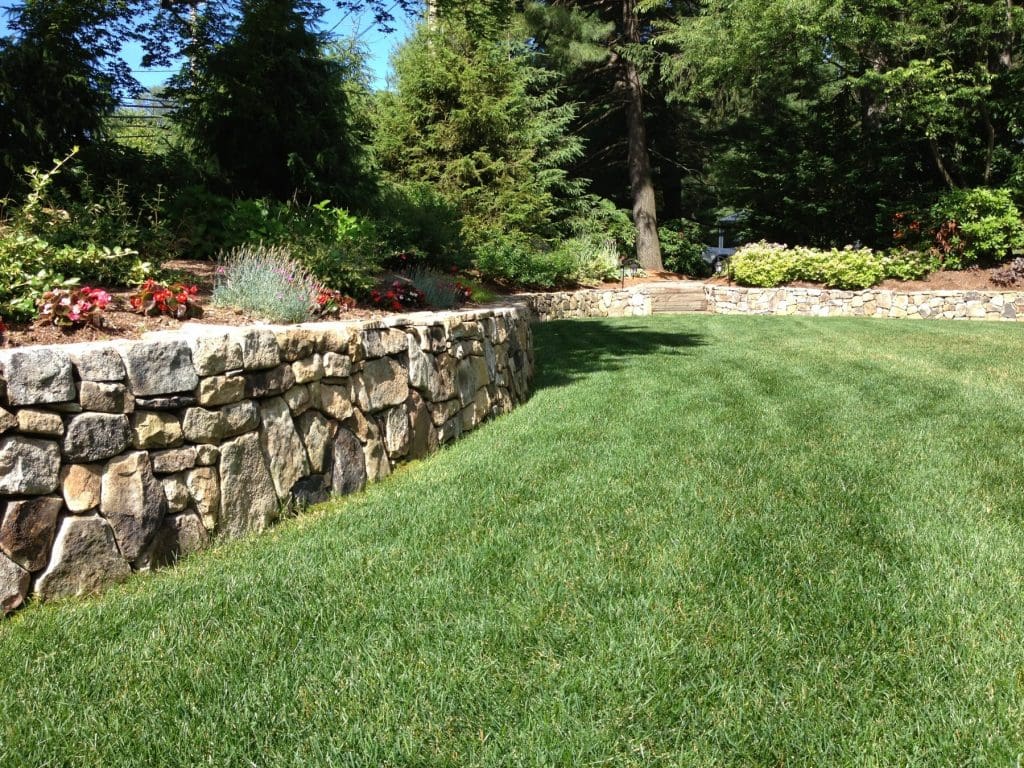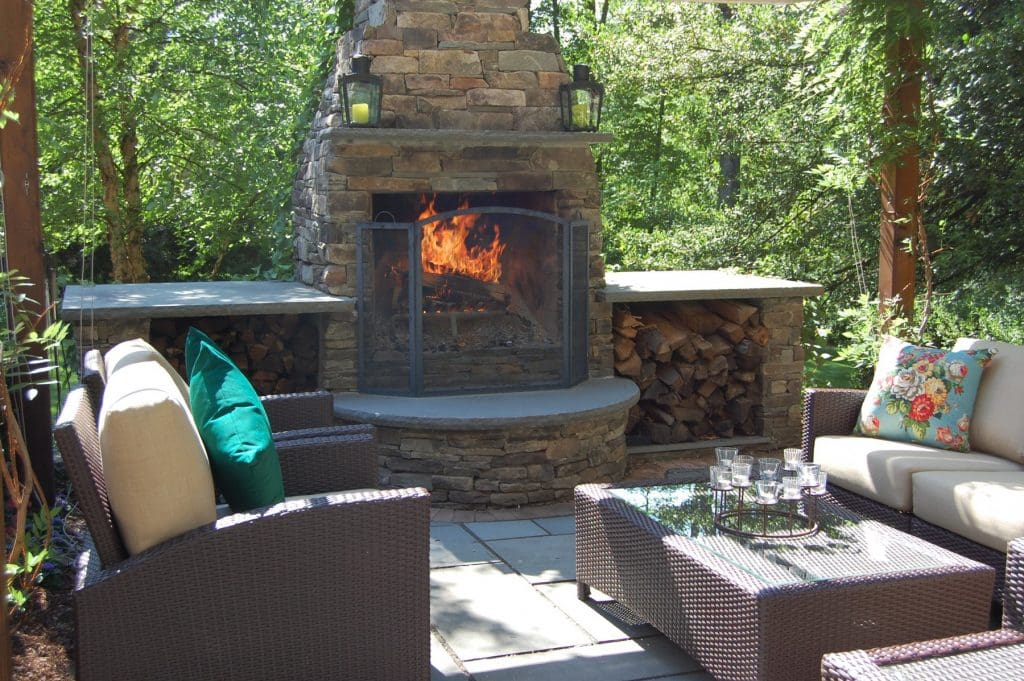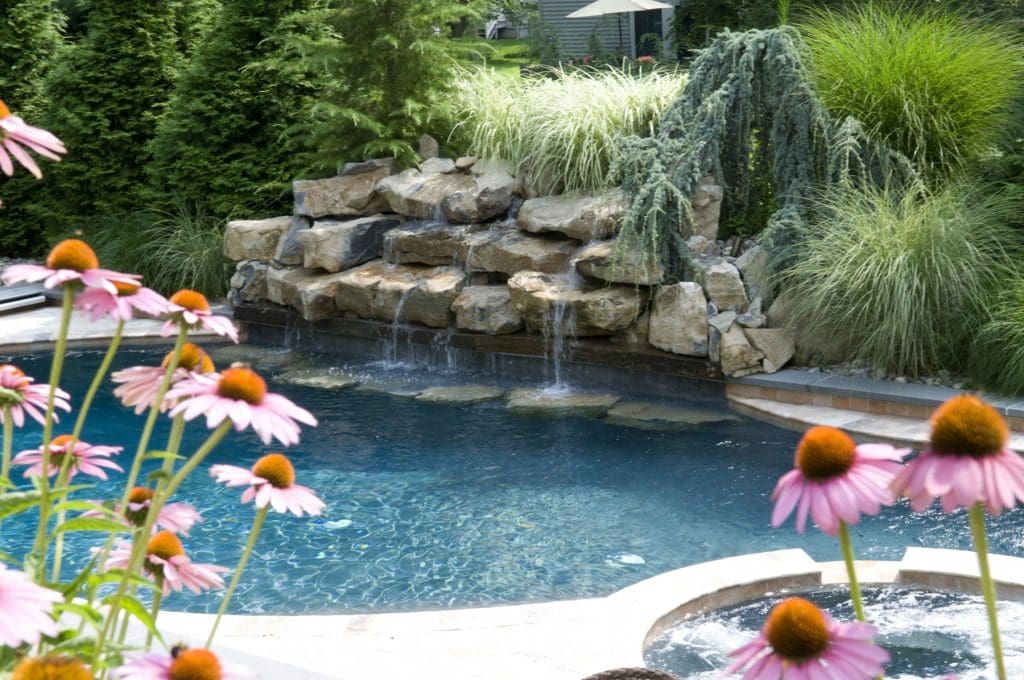In Northern New Jersey, we look forward to warm spring and summer temperatures after typical cold winters with snow and ice.
Warmer weather brings opportunities for enjoyable outdoor activities like backyard cookouts, pool parties and relaxing with family and friends on the patio.
Temperatures in Bergen County usually begin to rise in March or April, but our winter in 2015 was reported as the fifth warmest winter on record since 1985.
December 2015 was the warmest December ever recorded, and February was the 19th warmest February on record in New Jersey.
Although we enjoyed a milder winter last year that allowed more time outdoors, we may see negative affects in the landscape.

What type of grass is in your lawn?
Although it’s not always obvious, your lawn has a specific growing season based on the type of grass you have planted.
There are two main types of grass varieties, cool-season grasses and warm-season grasses. Each type has different dormancy and growth periods and responds to changes in seasons and temperatures. The weather has a direct affect on the growth, health and appearance of your lawn.
- Cool-Season Grasses – Cool-season grasses prefer mild, wet winters and do well in colder climates with snow and ice. They grow predominantly in the fall and thrive in areas with at least 30 inches or more of yearly rainfall. Cool-season grasses include Kentucky and rough bluegrass, creeping bentgrass, fine, tall and blue fescue and ryegrass.
- Warm-Season Grasses – Warm-season grasses prefer year-round temperate climates with hot, humid and dry weather. They grow predominantly in spring and summer and thrive in areas with less than 20 inches of yearly rainfall. Warm-season grasses include Bermuda grass, buffalo grass, St. Augustine and zoysia. Since they thrive in warm climates, they are not typically planted in Northern New Jersey lawns.
How a warm winter affects your lawn.
Since most lawns in Northern New Jersey landscapes are made up of cool-season grasses, a warm winter is likely to impact growth patterns.
Cool-season grasses grow during the fall and winter when the weather is cold and rain produces air that is damp and moist. A warm winter can impact the growth, health and vitality of your lawn.
A Shorter Growth Season
Cool-season grasses, common to Bergen County lawns, grow best in cooler temperatures below 60 degrees Fahrenheit.
They enter their most abundant growth period in fall and winter, then go dormant and turn brown in spring and summer with rising temperatures and hot sun.
When there’s a warm winter, cool-season grasses often go dormant earlier and fail to produce healthy, new growth.
When spring arrives, they lack the ability to produce strong, green growth because of a premature dormancy period and lack of water and nutrients.
You may have a more difficult time creating a lush, green lawn for spring and summer without the help of a landscape professional who can bring your lawn back to life.
Lack of Water
To keep your dormant grass healthy between growth periods, you should supply just enough water to keep the roots alive and viable for the next growth period.
When your lawn has been brown and dormant for about three weeks, water the lawn to a 5-inch soil depth.
If you continue to water your dormant lawn with this schedule, it will remain brown, but it will not die. Maintaining a potentially green lawn through dormancy requires 1 inch of water every week.
However, this additional watering may contribute to fungal and bacterial pathogens which cause lawn diseases.
For healthier results, you can allow the grass to remain brown and dormant with once a month watering sessions.
Excessive Weeds
Although weeds can pop up in your lawn at any time during the year, they tend to thrive and grow faster in warm weather.
Many broadleaf and creeping varieties of weeds that are dormant in cold weather will show up earlier in a warm winter, especially if your lawn is lacking nutrients, water or proper maintenance.
Aggressive weeds like crabgrass, foxtail and dandelions grow quickly. They can spread throughout your entire lawn in a couple of weeks in warm weather. Once weeds take hold in your lawn, getting rid of them is usually difficult without a landscape professional and the right herbicide treatments.
Lawn Diseases
During a cold winter, most lawn diseases are avoided because they prefer warmth and humidity. With a warm winter, your lawn is more likely to have problems with lawn diseases earlier in the year.
Most lawn diseases are caused by fungal infections that invade the soil, turf roots or grass blades in your lawn. If you notice signs of lawn diseases, it’s best to contact a landscape professional who can apply the proper type and amounts of herbicides.
Lawn diseases common to Northern NJ lawns include:
- Dollar Spot – Dollar spot commonly invades bentgrass and Kentucky bluegrass. It thrives in hot weather in lawns that lack water and nitrogen. This fungus resembles small silver dollars that are usually gray, brown or straw-colored and can spread rapidly across the lawn.
- Fairy Ring – Fairy ring attacks all types of grass, and it’s easily recognized by bright green circular rings that spread across the lawn. Rings can grow up to fifty feet in diameter and often contain excessive mushroom growth.
- Fusarium Blight – Fusarium blight, also known as summer patch, thrives in hot weather. It causes light green circular patches of grass that soon turn reddish brown and die. Patches are usually one to three inches in diameter, but they often grow together creating larger patches.
- Rust – Rust fungus typically invades the grass blades of Kentucky bluegrass and perennial ryegrass in hot weather. It thrives in lawns with poor or compacted soil and lack of water. Grass blades first turn orange or reddish-brown, then turn black as the fungus progresses.
How a warm winter affects your plants.
Plants in your landscape respond to three important factors – temperature, light and water. With a warmer-than-usual winter season, plants are often fooled into believing that it’s spring.
When this occurs, plants will grow faster, bloom earlier and rapidly produce new buds and foliage.
If winter temperatures remain warm until spring, plants will likely survive with proper spring care. If winter temperatures turn cold again after a warm spell, plants are more likely to suffer damage and die.
The challenge with warm winter weather is whether temperatures stay warm or whether freezing temperatures return. Either way, a warm winter can cause stress on plants and create fewer spring blooms, as well as more plant diseases.
Plants and Flowers
- Perennials – Perennials may bloom early in a warm winter, but they will probably be fine through spring and summer. Perennials often go dormant in cold winter weather, but their important parts are stored below ground.
- Annuals – Many annuals are spring and summer bloomers. In a warm winter, they may bloom early, then die before spring or summer arrives. Some cold hardy annuals like snap dragons may not bloom at all in a warm winter.
- Bulbs – Depending on their normal blooming time, some bulbs may bloom too early and die before spring or summer. With bulbs, flower parts are protected underground, so they will likely bloom as usual the following spring or summer.
Flowering Tree and Shrubs
Spring-flowering trees and shrubs may begin to bloom earlier than normal in a warm winter. You will notice new stem growth and flower buds on old wood branches much sooner than expected.
In Northern NJ this year, there were many buds on azaleas, forsythias, rhododendrons and magnolias as early as late January that don’t usually show up until spring.
When those buds bloom early, they may not bloom hardily in the spring and summer as expected. Summer or fall-blooming trees and shrubs are less likely than spring-bloomers to bloom prematurely, since they typically bloom in June or July.
Fruit Trees
During a warm winter, fruit trees may begin to produce fruit too early. When spring and summer arrive, you may notice much less fruit than usual.
Fruit trees that produce cherries, plums, grapes, peaches, apricots, blackberries and raspberries may produce much less fruit if they are unable to harden off properly.
In a warm winter, their flower buds, the future fruits, may skip the normal dormancy period and produce fruits too early. Most apples require a long period of winter weather before production.
Plant Diseases
- Dry Rot – Dry rot often attacks freesias, daffodils and gladiolus causing decay to stems and leaves. Once infected, plants usually show stunted growth and fail to bloom, and bulbs develop dark brown, sunken lesions with raised edges.
- Leaf Spot – Leaf spot can be caused by fungal or bacterial pathogens, insects or mites. Spots can vary from tiny, discrete dots to irregular yellow or brownish patches that cover most of the leaf surface on the plant.
- Powdery Mildew – Powdery mildew can form or plant stems and leaves, as well as flowers and fruit. On sycamores, crape myrtles and rose bushes, it often attacks new growth and causes dwarfed plants. Infected leaves generally die and fall off of the plant.
- Smoulder – Smoulder typically infects bulbs rather than leafy plants. When bulbs are infected, brown, streaked lesions will often appear on leaf tips as bulbs begin to bloom. Diseased plant tissue often shows up as woolly gray or black growth near the soil line.
Outdoor Insects and Pests
During a warm winter, your lawn, plants, shrubs and trees are subject to early damage from harmful insects and outdoor pests. Cold winters are extremely detrimental to harmful insects and other outdoor pests.
Cold weather causes mortality in eggs, pupae and many over-wintering insects. Unfortunately, a warmer-than-normal winter is often followed by a hotter-than-normal summer.
This extended period of warm weather brings out a variety of insects and pests that can cause significant damage to your landscape early in the year.
If you notice an increase in insects and outdoor pests in your landscape, talk to a Bergen County landscape professional about an Integrated Pest Management Program (IPM) for your home.
It will provide year-round protection from harmful insects and pests with completely natural, organic solutions that keep chemicals away from your family and pets.
For best results, an Integrated Pest Management Program should be a part of your regular lawn care and maintenance program with applications in the spring, summer and fall.

